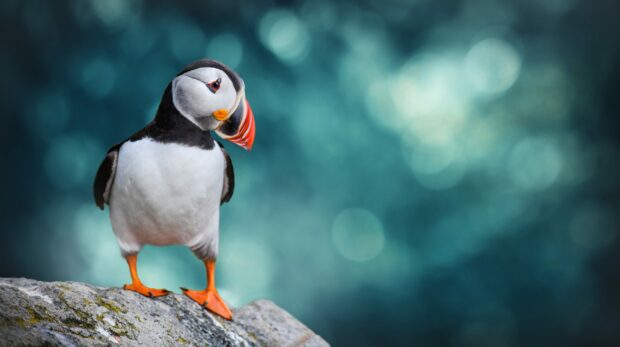
The death of more than 100 puffins is still baffling scientists examining possible links with the demise of thousands of other seabirds washed up on Scottish shores earlier this year.
Post mortems may help explain the huge number of deaths but the results will not be known for weeks after the puffins were found across the northeast coast of Scotland, including Orkney and Shetland. The deaths over the past three weeks mark one of the worst “wrecks” seen in half a century.
Thousands of guillemots and razorbills have also been found dead on beaches from Orkney down to the north and east of England. Large numbers were also reported feeding close inshore, and venturing several miles up rivers searching for food.
Cases have been recorded by the UK Centre for Ecology & Hydrology (UKCEH), which carries out long-term monitoring to detect the effects of environmental change on seabird populations.
Investigations into the earlier seabird deaths have led to more than 100 birds being tested for avian flu, all of which were negative.
The probe is now focusing on two possible explanations: a significant failure of the marine food supply or toxic poisoning from algal blooms, as well as, potentially, a combination of both.
The first possibility involves research into whether there was a reduction in food, or in the quality of food in the North Sea in the weeks leading up to the deaths, possibly caused by unusually warm water temperatures in early September.
Meanwhile, toxins found in algal blooms can fatally poison seabirds or affect their behaviour in such a way that it affects their feeding habitats, functions and general health, which can also lead to death.
An algal bloom said to be “the size of a large county” was reported off the north east coast of Scotland, close to some key seabird feeding hot spots.
Dr Francis Daunt, seabird ecologist at UKCEH, said this was one of the largest puffin death incidents seen in 50 years.
He said: “At present we don’t know if these recent puffin deaths are linked to the earlier guillemot and razorbill deaths that occurred back in the autumn.
“However, UKCEH, along with our partners, will look to establish if this is the case as part of our ongoing investigations.”
“Many of the people who have found the birds say they are emaciated, which suggests there could be a problem within the marine food chain.”
Duncan Orr-Ewing, RSPB Scotland’s head of species and land management, said there was concern that next year’s breeding numbers could be affected.
He said: “Many of the puffins that are dying are adult birds so that could clearly impact on the breeding population for next year. The puffin is red listed and some populations have declined by more than a half in recent decades so they are already in conservation trouble. These kinds of incidents just compound that.
“With the guillemots I understand a lot of the birds affected were young birds from this year. A large amount of the productivity of guillemots from this year could have been wiped out.”
Simon Foster, NatureScot Trends & Indicator Analysis Officer, added: “We won’t see the full impact of these wrecks until next summer when we measure if breeding numbers are affected.
“It’s likely we’ll see more wrecks over winter, and the overall stability of seabird populations are often not affected by these events. But we’re keen to see CEH’s results, as it’s more important than ever that we keep track of how our seabirds are faring with climate change. Increasing temperatures and more unpredictable weather are affecting many of Scotland’s species.”

Enjoy the convenience of having The Sunday Post delivered as a digital ePaper straight to your smartphone, tablet or computer.
Subscribe for only £5.49 a month and enjoy all the benefits of the printed paper as a digital replica.
Subscribe